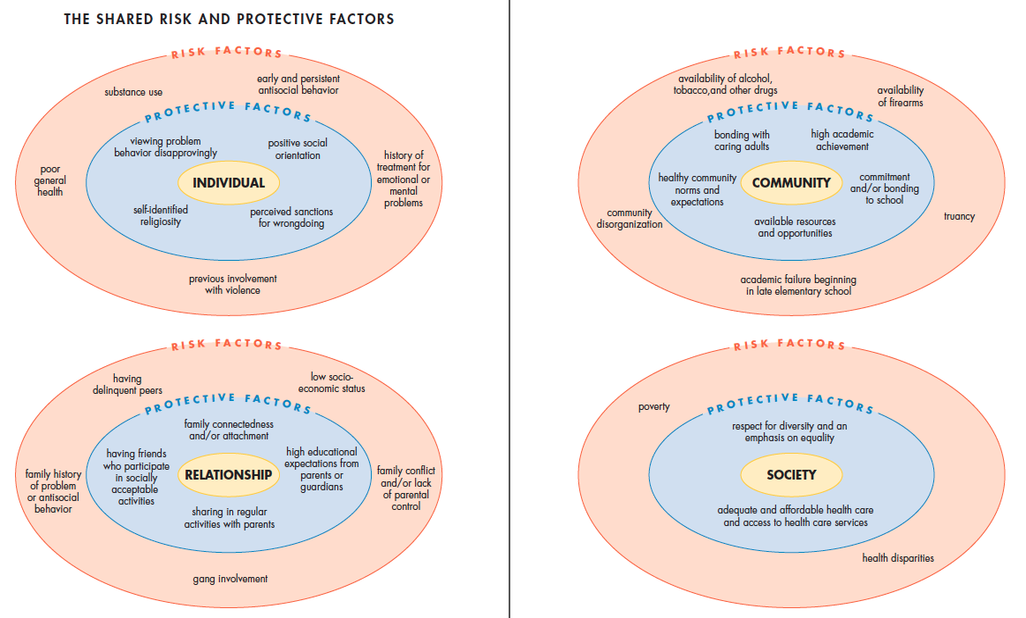Linkages between different types of violence
Many types of violence, including sexual violence, intimate partner violence, child abuse and maltreatment, community violence, teen dating violence, and others co-occur and share common risk and protective factors, and consequences. It may make sense to work collaboratively with professionals who typically work to prevent a different kind of violence in order to best serve your community and prevent violence.
The CDC released a brief called Connecting the Dots: An Overview of the Links Among Multiple Forms of Violence in 2014. The brief was co-developed by CDC’s Division of Violence Prevention and Prevention Institute. It discusses research on connections between different forms of violence and describes how these connections affect communities. The purpose is to support those working to prevent violence in thinking strategically and creatively about:
- Preventing all types of violence from occurring in the first place and
- Coordinating and integrating responses to violence in a way that recognizes these connections and considers the individual in the context of their home environment, neighborhood, and larger community.
Download a PDF of the brief below.![]() connecting_the_dots-a.pdf
connecting_the_dots-a.pdf
- Download
- 3 MB
In 2016, the CDC released a report called Preventing Multiple Forms of Violence: A Strategic Vision for Connecting the Dots. This report described CDC’s Division of Violence Prevention’s 5-year vision and areas of strategic focus to help understand, respond to, and prevention violence across the lifespan. This PreventConnect web conference explored how the report can guide local, state, and national violence prevention practice.
“Bold Steps toward Child and Adolescent Health: A plan for youth violence prevention in Colorado” (2006) from the Colorado Department of Public Health does a great job of highlighting the common risk and protective factors of various kinds of violence.![]() Bold steps toward child and adolescent health.pdf
Bold steps toward child and adolescent health.pdf
- Download
- 778 KB
 From: Bold Steps toward Child and Adolescent Health, Colorado Department of Public Health, 2006
From: Bold Steps toward Child and Adolescent Health, Colorado Department of Public Health, 2006
CALCASA’s Unifying Fields Project, “Reciprocal Advancement: Building Linkages Between Domestic Violence and Sexual Assault” provides a foundation to explore and develop resources and relationships to advance the efforts of both sexual assault and domestic violence.![]() CALCASA-BSU-FieldsRep_FINAL.pdf
CALCASA-BSU-FieldsRep_FINAL.pdf
- Download
- 1 MB
